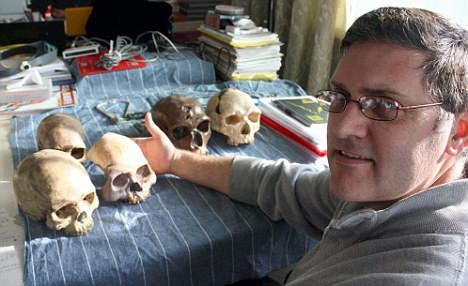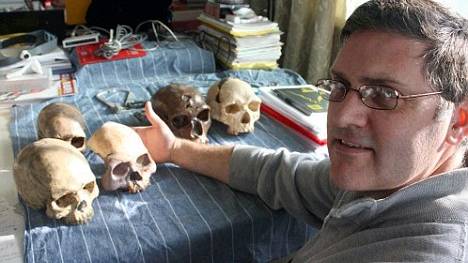Leading Anthropologist Says Human Beings "Extinction Proof"
Source: dailymail.co.uk
 The theory that human beings may be extinction-proof has been put forward by a leading anthropologist.
The theory that human beings may be extinction-proof has been put forward by a leading anthropologist.Darren Curnoe, a senior Lecturer at University of New South Wales, made the argument in an article published on academic website on The Conversation.
He advances the theory that comparing historical extinction rates among humans and animals shows how the advent of mass farming some 8,000 years ago fundamentally altered our evolution.

Curnoe, the author of the article, is a leading light in evolution and human anthropology.
He wrote: ’Farming gave our species level assurance that the biological isn’t always inevitable.
’The odds have shifted to such a degree that we may now be, with or without climate change, extinction-proof.’
His article comes after the Bulletin of the Atomic Scientists (BAS) moved its famous Doomsday clock one minute further from midnight, to six minutes, thanks to ’progress seen around globe in both key threat areas: nuclear weapons and climate change’.
The clock serves as a countdown to a theoretical apocalypse and the end of the human race, based on threats - whether nuclear or climatic - to our race.
The decision by the BAS, comprising 18 Nobel laureates from the worlds of chemistry and physics, has affected the thinking of Curnoe, an evolution and anthropology specialist of 15 years standing.
In 2010, Curnoe named and described the new species Homo gautengensis, one of the oldest known members of the human genus.
As background to his theory, he explains in his article that while extinction for the human race sounds apocalyptic, in biological terms it is almost a matter of certainty.
There was no animal life on earth 500million years ago whereas today there are around 6million species.
Humans - Homo sapiens – are just one of the 4,500 species of mammal and in our seven million years of evolution from apes some 30 or so species of two-footed ape have evolved and become extinct.
That is a 95 per cent loss of hominin biodiversity, whereas about one third of animal species becomes extinct every 10million years, which means the rate of extinction among hominins is three timers that of normal animals; we are prone to extinction.
But, the article argues, the Neolithic revolution 10,000 years ago - the invention of farming - fundamentally changed humans as a species.
There were around 100,000 hunter-gatherers in the Ice Age and now the worldwide population stands at approximately seven billion.
Curnoe says: ’Seen in its broadest context, the history of life on Earth soberly demonstrates that the vast majority of organisms that ever lived, perhaps 99 per cent of them, no longer do,’ wrote Curnoe.
’It also shows that mammal species normally last 1-2 million years before extinction inevitably bumps them off.
’Yet, unlike most mammals, including our dozens of extinct hominin cousins, we have escaped the vulnerabilities of a small and massively fluctuating population.
’The simple, but profound act, of growing our own food delivered us the food security that ensured most of our children survived and our population grew.
Read the full article at: dailymail.co.uk






















